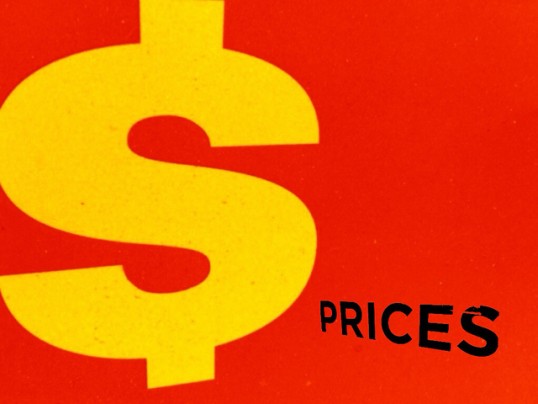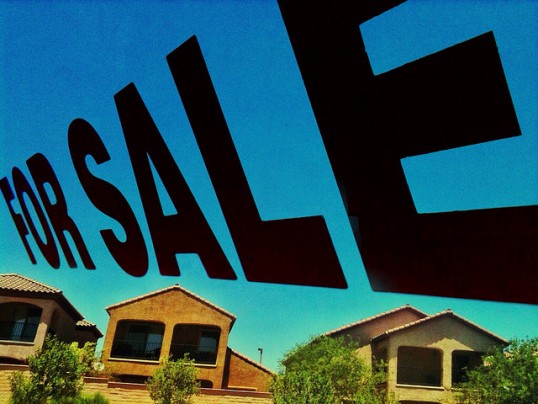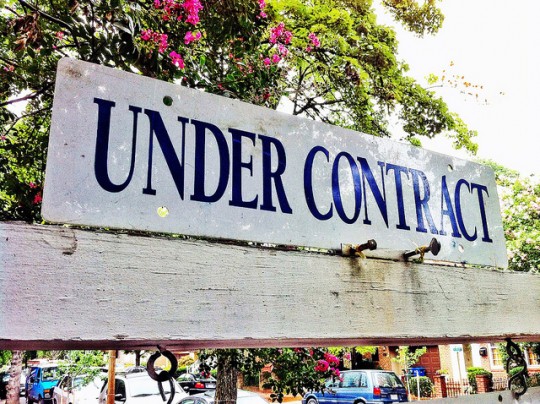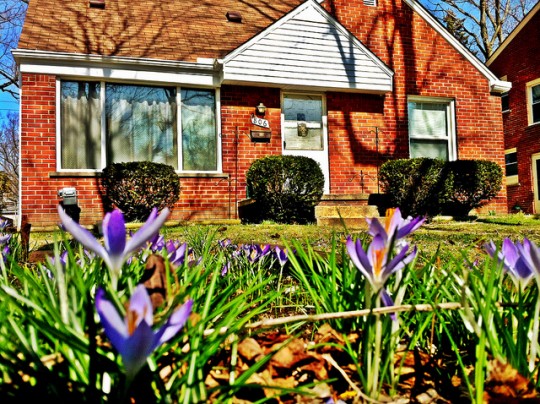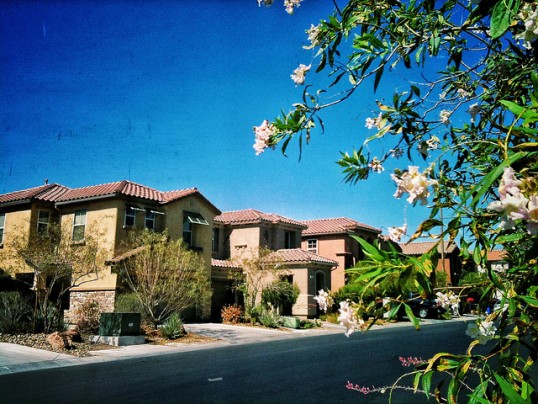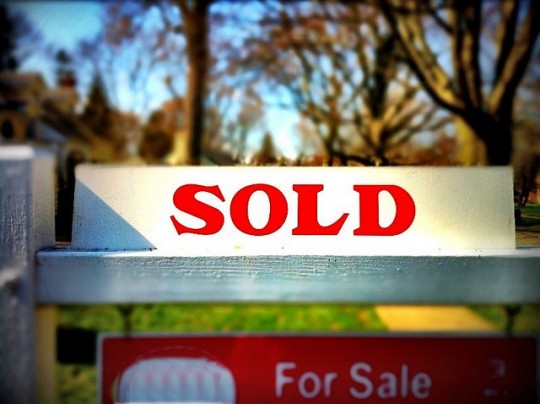Rising home prices are often seen as a sign that the housing market is healthy and doing well. But, according to Trulia’s latest Price and Rent Monitor, just because an area is experiencing sharp price increases doesn’t mean it’s fully recovered. For example, the five metropolitan areas that have seen the largest price gains over the past year, are all significantly below normal levels when looking at construction activity and building permits. On the other hand, metro areas that didn’t suffer large price declines during the recession – and, therefore, have had relatively small price increases since – are experiencing a residential construction boom. The takeaway, according to Trulia’s chief economist Jed Kolko, is that the housing recovery is going to require more than just increasing home values before it’s truly rebounded from the financial crisis. While the overall trend is positive, the particulars of each local market require a deeper look. Also in the report, home prices experienced their smallest year-over-year increase in 11 months, though they’re up 2.8 percent quarter-over-quarter. More here.
Tag Archive for chief economist
Existing Home Sales Flat In March
Sales of previously owned homes were virtually unchanged in March, according to new data from the National Association of Realtors. Existing home sales – which include single-family homes, townhomes, condominiums, and co-ops – were 0.2 percent below February’s rate and 7.5 percent below year-before levels. Lawrence Yun, NAR’s chief economist, said that sales activity is slow by historical standards. There should really be stronger levels of home sales given our population growth, Yun said. Still, Yun believes there will be improvement in the months ahead, due to continued gains in the job market and sales of homes that were delayed over the winter because of harsh weather. Regionally, home sales were up in the Northeast and Midwest but fell in the South and West. Housing inventory – which drives price increases when low – improved in March, with unsold inventory up 3.1 percent from a year ago. There were 1.99 million previously owned homes available for sale at the end of the month. At the current sales rate, that represents a 5.2-month supply, up from a 4.7-month supply one year ago. Also, the median existing-home sales price for all housing types was $198,500. More here.
Expected Gains Will Help Housing Momentum
Economic and housing market growth was slow in the first quarter but both are expected to pick up as the year goes on. In fact, according to Fannie Mae’s Economic & Strategic Research Group, that expected pick up should begin this quarter and carry through the rest of the year. Doug Duncan, Fannie Mae’s chief economist, said the agency has downgraded their housing forecast slightly but the recent loss of momentum is a temporary one. Duncan believes housing will contribute to economic growth this year, with both new home sales and new residential construction experiencing increases over last year’s totals. Existing-home sales, on the other hand, have been relatively flat, due in part to the fact that there are fewer distressed properties being sold to real-estate investors this year as compared to the year before. Despite a slower-than-expected first quarter, however, Fannie Mae is still predicting a slight increase in overall economic growth in 2014 over last year’s pace. More here.
Pending Home Sales Flat But Stabilizing
Pending home sales are a forward-looking indicator of future existing-home sales based on the number of contracts to buy homes that are signed during the month. In February, contract signings slipped 0.8 percent, according to the National Association of Realtors. Lawrence Yun, NAR’s chief economist, said pending home sales have been little changed over the past three months, which indicates the market is stabilizing. Buyer traffic has increased modestly as the spring selling season begins and there is an expectation that some transactions that were delayed due to winter weather will now close. According to Yun, this suggests that the home sales slowdown may now be behind us. Regionally, the report was a mixed bag. Pending sales were up in the Midwest and West, while falling in the Northeast and South. Overall, contract signings are 10.5 percent below year-before levels. More here.
Home Sales Expected To Pick Up In Spring
The number of previously owned homes sold in February was virtually unchanged from the month before, according to data recently released by the National Association of Realtors. Total existing-home sales dropped just 0.4 percent from January and are now 7.1 percent below year-before levels. Lawrence Yun, NAR’s chief economist, said there were unusual weather disruptions across much of the country in February and that, along with constrained inventory and less favorable affordability conditions, led to a largely unchanged sales rate. But Yun expects sales to pick up over the months ahead, adding that some transactions are simply being delayed and, with an expected improvement in job creation, home sales should trend up modestly over the course of the year. In fact, in regions where winter weather wasn’t an issue, home sales have already risen. The West and South both saw sales increases in February, while the Midwest and Northeast experienced declines. Also, the median existing-home price for all housing types was $189,000, which is 9.1 percent above February 2013. More here.
Younger Buyers More Confident In Market
The Millennial generation, which includes people born between 1980 and 1995, are now reaching the age of the typical first-time home buyer. And, according to the 2014 National Association of Realtors Home Buyer and Seller Generational Trends study, younger buyers are now purchasing the most homes and are the most optimistic about their home’s value as an investment. Lawrence Yun, NAR’s chief economist, said Millennials aspire to own their own home and, since they are the largest generation in history after the Baby Boomers, it means there is potential for strong underlying demand. In fact, young adults were the most likely to say their reason for buying a home was to own a house of their own, as opposed to older adults who cited retirement or the need to move closer to family and friends. Younger buyers were also more likely to move to an urban area, stay close to their previous residence, and place higher importance on commuting costs as opposed to energy efficiency, landscaping, and community features. According to the study, the median age of Millennial home buyers was 29 and they typically bought a 1,800-square-foot home that cost $180,000. More here.
Sales of Previously Owned Homes Slip 5.1%
Sales of previously owned homes fell 5.1 percent in January, according to estimates released by the National Association of Realtors. With the drop, last month’s sales pace was the slowest since July 2012. Lawrence Yun, NAR’s chief economist, believes unusual weather played a role in the decline. According to Yun, disruptive and prolonged winter-weather patterns across the country are impacting a wide range of economic activity and housing is no exception. Decreasing sales activity is expected to turn around, however, as the weather warms and the selling season begins this spring. Also in the report, prices continue to rise, with the median existing-home price up 10.7 percent from one year earlier. In part due to limited inventory, price increases are also being driven by a nearly 10 percent year-over-year drop in the number of distressed homes, including foreclosures and short sales, sold during the month. And though inventory has tightened, January’s estimate shows a slight increase from the month before. At the current sales pace, there was a 4.9 month supply of unsold homes available for sale at the end of January, up from 4.6 months in December. A six-month supply is considered healthy for the market and represents an equal balance of buyers and sellers. More here.
